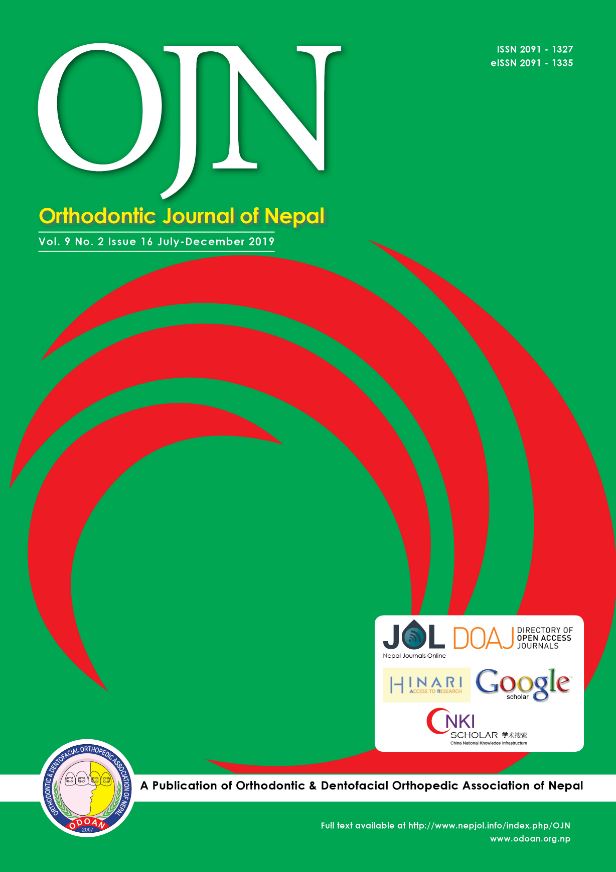Oxidative Stress Levels in Orthodontic Patients and Efficacy of Antioxidant Supplements in Combating Its Effects- A Randomized Clinical Study
DOI:
https://doi.org/10.3126/ojn.v9i2.28409Keywords:
Antioxidants, Free radicals, Lipid peroxidase, MDA, Oxidative stressAbstract
Introduction: Orthodontic appliances are considered to be biocompatible although adverse effects attributed to release of nickel ion which are free radicals in oral cavity. These free radical produce damages both in cellular and extracellular components phospholipid membrane, proteins, mitochondrial and nuclear DNA leading to Oxidative stress which is normally counter balanced by the action antioxidant mechanisms. However in higher concentrations of free radicals resulting in cellular death and apoptosis Orthodontic appliances such as brackets, wire, resins has considered as potential allergen leading to release of free radicals. The study was conducted to determine and compare the role of oxidative stress and role of antioxidants in saliva of patients undergoing fixed orthodontic appliances therapy at different time intervals.
Materials & Method: A double-blinded, parallel, randomized clinical study was designed consisting of 40 healthy participants, aged 15-30yrs. The samples were divided into two groups Group A without antioxidants supplements and Group B with antioxidants supplements. Salivary MDA levels and gingival health index was recorded at different time intervals from each group. Salivary Lipid peroxidation (Malondialdehyde) level was estimated using Thiobarbituric acid (TBA) method and gingival status was investigated using Silness & Loe gingival index. Intragroup and intergroup comparison was statistically analyzed using student’s paired T test.
Result: Increased salivary MDA levels and mild to moderate amount of gingivitis is seen in both groups. This is more pronounced after 24 hours of appliance placement. Improvement in salivary MDA levels and gingival health status is observed during the course of treatment, In Group B the salivary MDA levels and gingival health index score reached below their pretreatment values. However even after a span of 3 months the levels remained higher to their base values in Group A.
Conclusion: Improvement in salivary MDA levels and gingival health status is observed following antioxidant therapy during course of treatment, indicating combating nature of antioxidant supplements in orthodontic patients.
Downloads
Downloads
Published
How to Cite
Issue
Section
License
Copyright © held by Orthodontic & Dentofacial Orthopedic Association of Nepal
- Copyright on any research article is transferred in full to the Orthodontic & Dentofacial Orthopedic Association of Nepal upon publication in the journal. The copyright transfer includes the right to reproduce and distribute the article in any form of reproduction (printing, electronic media or any other form).
- Articles in the Orthodontic Journal of Nepal are Open Access articles published under the Creative Commons CC BY License (https://creativecommons.org/licenses/by/4.0/)
- This license permits use, distribution and reproduction in any medium, provided the original work is properly cited.




